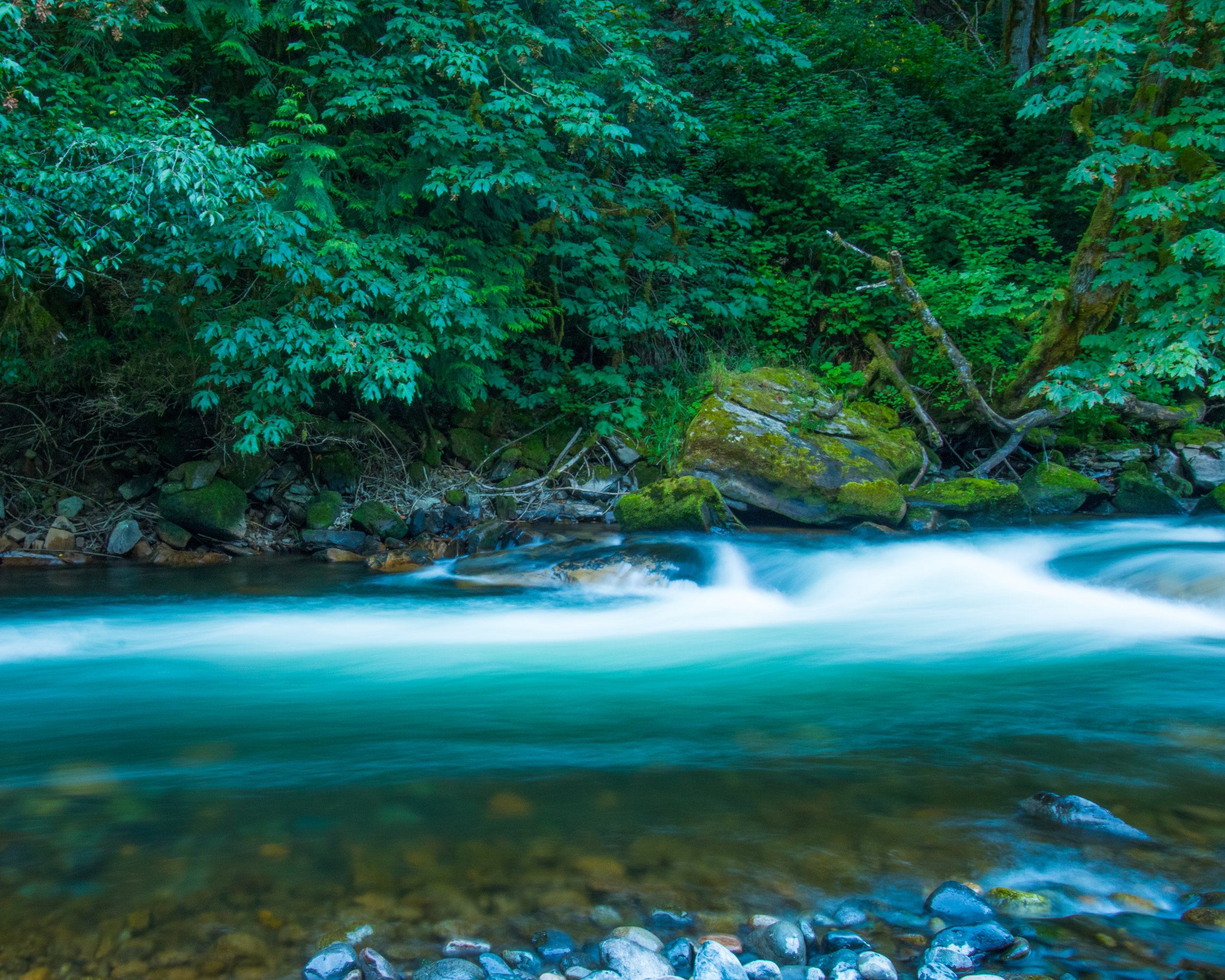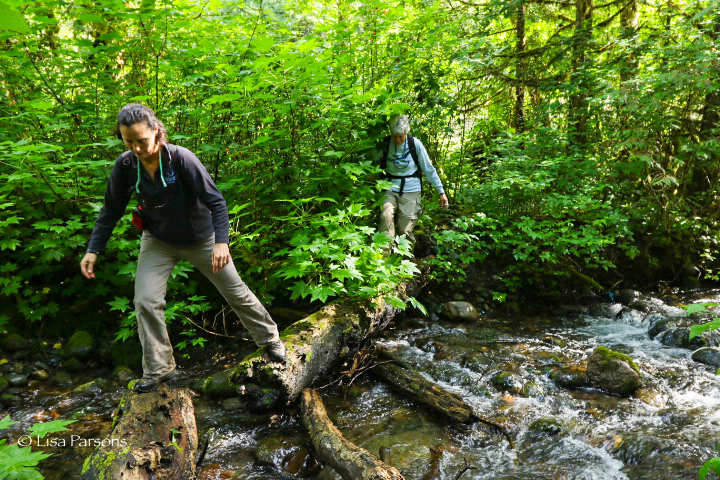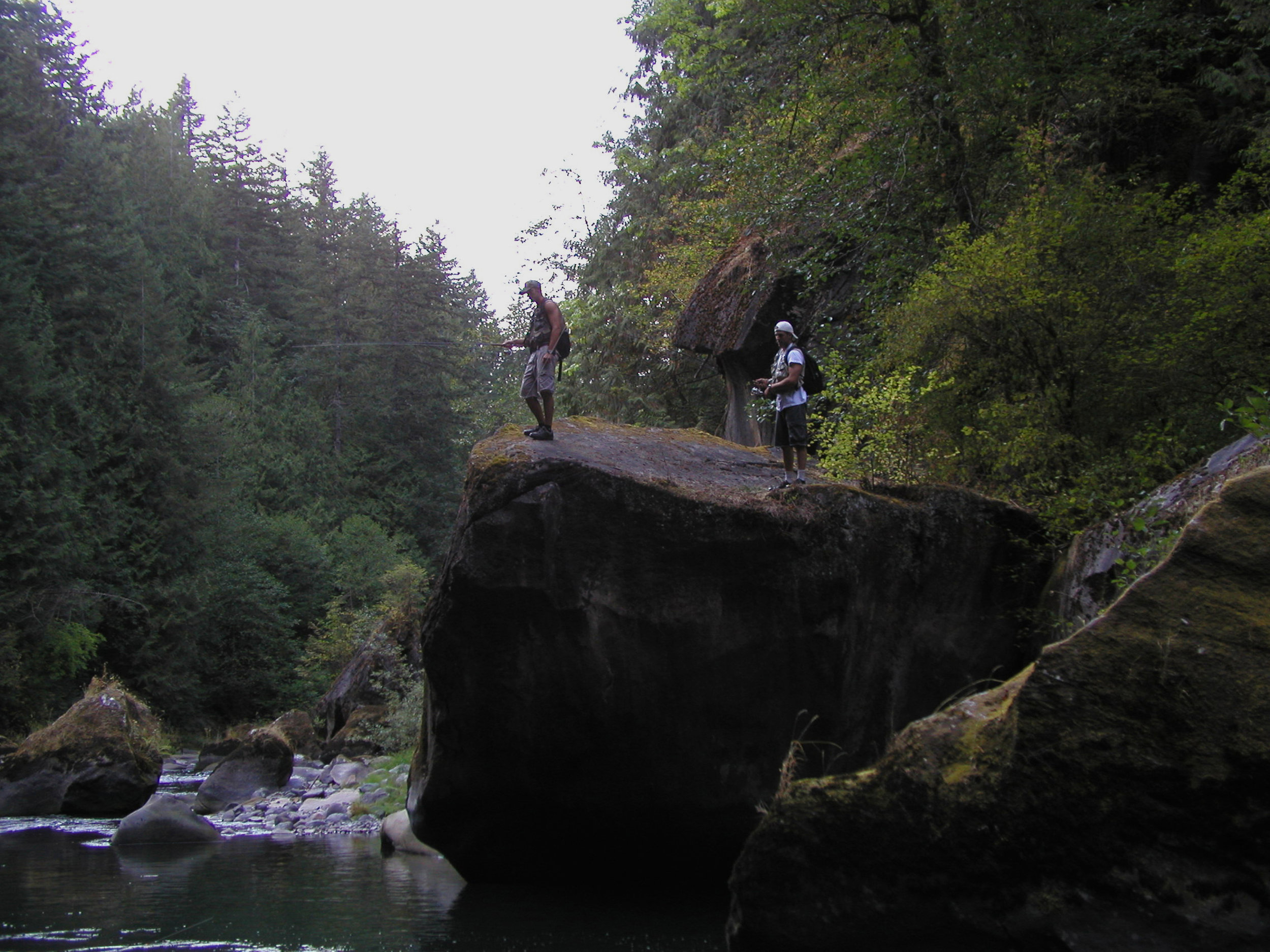When I was invited to exhibit my photographs at Green River Community College as part of a group show called Evanescence. I jumped at the opportunity. To show my conservation photography of the Green River Gorge at the college named after the river was a priority for me. Not just because of the name but also because the college had a Natural Resources and Forestry program that I hope will become an integral part of the conservation and restoration effort of the Green River Gorge Greenway.
My first thoughts about exhibiting my work come from my literal side. My work is a documentary to promote conservation. The goals of my exhibitions are to raise awareness of the Green River Gorge Greenway and promote conservation. The idea of showing as part of a “more conceptual art centered” theme, at first, seemed incongruous with my mission. Yet it is my profound conception of place through an artistic lens that feeds my passion for conservation. That passion is rooted in how I see the natural world.
Evanescence. n. The event of fading and gradually vanishing from sight.
The Impermanence of moving water.
Neil Berkowitz, Thelma Harris and Lisa Parsons respond to the idea of place uniquely from an ephemeral and abstracted sense of being in layered digital photography manipulation, to reflections on time and personal history through dimensional Polaroid wall and pedestal installations, to preservation of our natural world in the documentation of landscape. Together, these artists play off of each other’s profound conception of place and time through the lens and experimentation of photography, making the fleeting nature of time tangible.
Evanescence: Neil Berkowitz, Thelma Harris, and Lisa Parsons
February 14th – March 14th, 2019
Artist Panel Discussion and Closing Reception
Thursday, March 14th, 12-1pm
Author Photographing the Green River Gorge at Kanaskat at high water. Photo by Jean Hoilland
Discovering the Natural World Through the Lens
My time in the river helped me learn more about the rhythm of the river. The Green river isn’t just a river. It is a multi-layered story of currents, water, seasons, shorelines, habitat, stone, fish, wildlife, forests, and humans. All the elements that make up the watershed create the river. The story unfolds in the myriad of springs and streams that flow from drops of water that begin as snow or rain. The springs and streams flow into the river giving it shape and form. The water forms the carved sandstone edges, the forest around the river, and the currents that follow the channels downstream.
My discovery of the river started as seeing it as one body of water but as I started exploring the river by hiking through the fourteen miles of river gorge and bushwhacking, off and on trail, along the uplands; the picture became more detailed. Layers of imagery emerged from the landscape and the river from the tiniest flowers to the towering three hundred foot sandstone cliffs. Interwoven in the experience were encounters with black bear, bob cat, cougar, river otter, osprey, eagle, and King fishers. I’ve learned to see footprints in the mud and identify scat (poop) that tells stories of elusive animals that call the river gorge home. Often all that is seen if you know where to look is the footprints they have left behind.
Coyote along the rim of the Gorge
Chinook Salmon in Icy Creek
Salmon play a central theme in the river and in my conservation work. Chinook, Coho, and Steelhead pose the question of whether we can do what is needed now to protect this species by protecting the river. Through documenting the annual migration of the salmon I’ve learned so much about their journey through the river gorge. In the autumn I’ve swam with the salmon with my underwater camera capturing glimpses of their migration home. Above the water I’ve silently watched their bodies explode with energy that propels them up the last few feet of Icy creek to spawn and then to die. Their bodies, half in and half out of the water, lying on the rocks where they have laid their eggs. The last breathes leaving their rhythmic mouths.
Panorama of Hanging Gardens sandstone cliffs
The forest at the edges of the gorge are a mix of near old growth towering western red cedars with branches that bend with the air currents. Douglas fir and Hemlock also crowd around the river corridor. In some places older trees remain. In others young forests recover from logging or floods. Alder and native cherry mix with the evergreens along with giant maples.
Autumn at Kanaskat State Park
In autumn the giant maples glow brilliantly orange and yellow, their leaves floating like sheets of colored paper and landing on the forest floor. The last burst of color before the long winter of grey and barren branches.
Wild Winter River
Winter brings solitude and wildness as the river pulses against its confining edges. Barren branches stand dark against the backdrop of the grey sky. The water glows green as the only bright color in the dormant landscape. Wild water churns, boils, and spills over submerged rocks. It also brings solitude. Sometimes ice forms along cliff side waterfalls and along slack water in eddies and side channels.
Winter Solitude
Spring. Bright Trillium bursting out of the ground like precious jewels that you can never take for granted. They are greeted by the bright green unfolding fiddle head ferns, vine maple leaves, and the pink blossoms of salmon berry as the forest comes back to life. When the river flows are high from snowmelt or heavy rains whitewater rafters and kayakers can be seen dancing along the currents, challenging lines through rapids called Mercury, the Nozzle, and Pipeline. Their bright colored boats and clothes contrast against the layers of green in the river and surrounding landscape.
Hiking the Green River Gorge looking for otter poop with scientist, Michelle Wainstein of the Otter Spotter program
Summer settles in as a welcome relief to the endless months of rain. The river recedes. The flow is turned down by an upstream dam to a trickle of currents that barely riffle down the rocky drops before deep languid pools with sandstone edges. The sun is hot enough to counter the snowmelt cold of the green water. I’m invited to swim its lazy currents, and explore the sandstone edged shorelines. It is friendly and a maze to be discovered as more is revealed below the winter water line.
Summer fun hiking the Green River Gorge with friends and family. Photo by Jean Hoilland
Mysteries are revealed. Wood dams show where forces of current and high water have moved decaying forest downstream. Carved fluid sandstone exhibits nature’s sculptor, water, deepening the walls of the gorge for a millennia. Sandstone boulders poke out of deep pools where crawfish hide in water filled pockets. River otters fish and then eat atop the rocks and then discard the remains; evidence of their presence. Rope swings hanging silently revealing the transient presence of teenagers looking for a cool swimming hole to play in summer heat. Primitive trails down to the river lead to fishermen casting their lines into secret fishing holes.
Older photo of fishermen during my first hiking expedition down the Green River Gorge in the summer of 2001
So, yes, the photos are meant to promote conservation but they also tell the story of the many rivers within the river and about my time as explorer, photographer, activist, and artist. It is part of my story that is vanishing and fading from sight. The images are the evidence of my passage. My hope is that the Green River Gorge remains a wild river gorge. It will change with the seasons and natural rhythms but hopefully remain wild for others to discover and continue the story.
Water and Stone
Please share your images and stories of the Green River Gorge on the Friends of the Green River Gorge Facebook page. Become part of the river’s conservation story.













